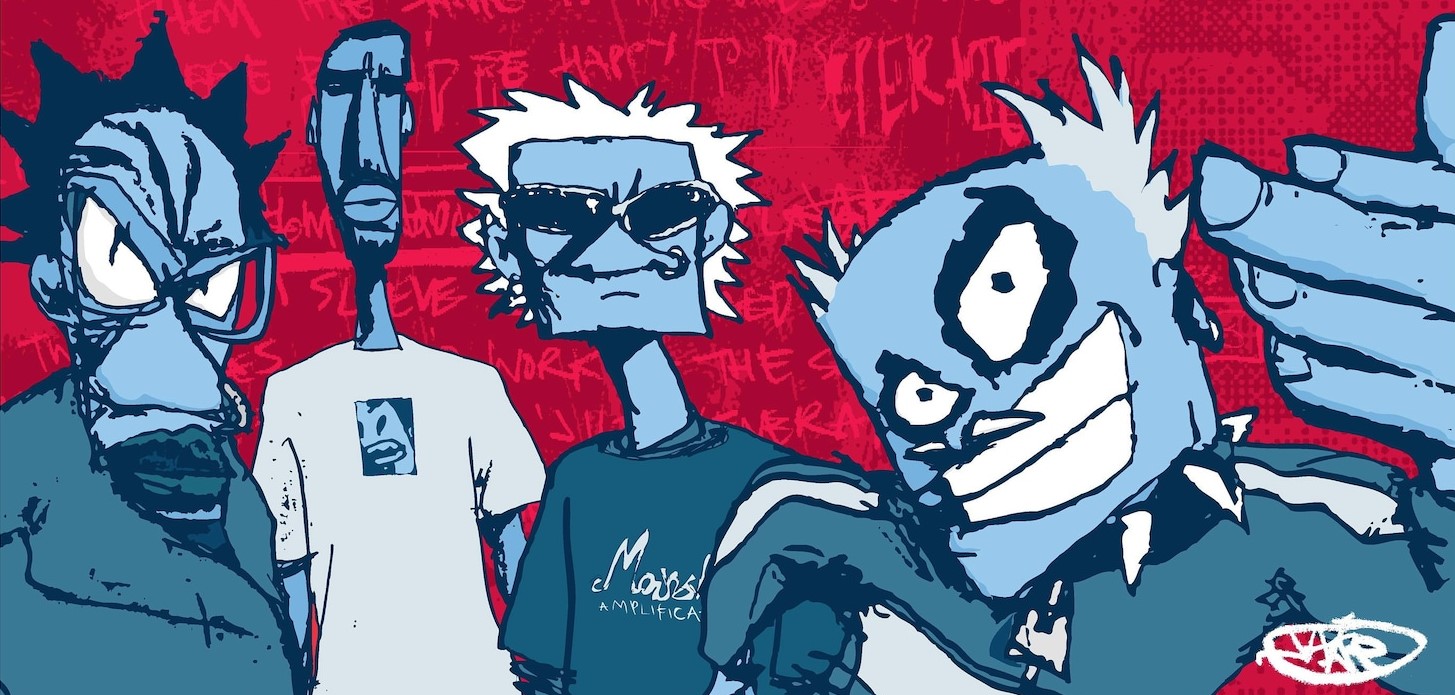Featured image: The Fat of the Land 1997 album artwork by Jake Detonator
Character Concept Art
This week we had a guest speaker, a true jack of all trades – Jake Detonator. Who is maybe the biggest Star Wars fan I’ve ever met, a illustrator, graphic designer, author, and so much more. His advice and experience was exceptional in taking the next steps toward the design of my project.
Key points from the talk:
- Start with simple shapes
- characters come from observations of real-world people
- archetypes: protagonists/antagonists
- thumbnails and sketches can be deliberate
- elevator pitch – how to pitch character concepts
- you should not explain everything about a character, you want a player to find out (mystery box mechanic)
The importance of good characters
World building, systems building, and other high concept stuff becomes instantly more interesting and accessible when we understand how it impacts the sentient beings whose lives are shaped by these God’s-eye- view ideas – characters give players a reason to learn about the world – people are the raw material of social systems.
You never know what types of people you will need in a project both in the main cast or as side/background characters and it makes a significant impact when time is spent learning how to be comfortable designing a wide range of people. Learning how to innovate with a wide will make characters that stand out and break the status quo, player bases are made up of vastly different people of all genders, orientations and cultures. To be able to represent these players accurately will make characters more than just their difference. Game designers should ensure that their making games for the spaces people need to escape to, games that will listen to and see people.
In Jake’s last visit he had asked us to begin thinking about sketching characters for our games, whether that’s the protagonist, the antagonist, a background character or just some guy. Personally, I always find it easier to think about the antagonist, or the force the player is fighting against (but mostly because I had no idea what I wanted to do for my game’s deuteragonist). So, I started thinking about the five stages of grief (Denial, Anger, Bargaining, Depression and Acceptance), made moodboards for them to get an idea of the vibe I would want each antagonist to convey and when it came to choosing which one I wanted to design first I decided to rule them out by order of elimination. In the end I found that the two that would be easiest to start sketching would be Depression and Anger. I chose Depression. My process of designing Depression can be found here.
Talking to Jake Detonator
I shared and discussed my game idea with Jake and he got really behind it (was totally normal and nonchalant about this). I explained the goals of the player, how the game related to other games, the aesthetics and some general ideas about the mechanics I had in mind. We shared a nice moment of opening up and sharing our personal experiences of grief, talking about all of the complexities that come with loss and the impact of that on life going forward.
He gave me an overview of Disney Pixar’s The Art of The Incredibles book and an amazing insight on the films use of colour semiotic is applied throughout, a large 4-page spread in the book showcased every major scene in the film by using a limited colour palette and collage-like abstraction, it was clear just how engineered and dominating the use of colour was. Jake advised me to really think about my use of colour and sound in the game to drive my narrative and concept, to be vivid and bold. When it came to sound, we chewed over the innovative uses of instruments, especially the more subtle ones such as percussion instruments and the various families of drums used in jazz, reggae and samba (pagode & bossa nova).
At the end of our conversation, he said he was excited to see what I would continue to do with my game and gave me a 𝒻𝒾𝓈𝓉 𝒷𝓊𝓂𝓅 (again, totally normal and nonchalant about this). If I got anything from the conversation, it was reassurance that I had picked the right game idea to develop.

Leave a Reply